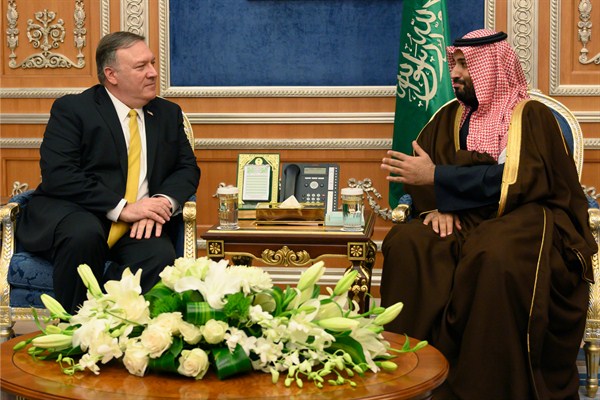For many decades, shared fears of common enemies—from the Soviets to the Iranians, Saddam Hussein and extremist movements like al-Qaida and the Islamic State—pushed America and Saudi Arabia into an uneasy embrace. But today that calculus is no longer enough to sustain their alliance. For the United States, the strategic costs of the Saudi relationship have come to outweigh the benefits, as the tensions and unnaturalness of the partnership make it increasingly intolerable.
The U.S. relationship with Saudi Arabia can be traced back to the 1930s, when the kingdom first began producing petroleum. By the 1970s, Saudi Arabia was an integral part of a broad American effort to prevent Soviet domination of the Middle East and protect Western access to Gulf oil. The Iranian revolution in 1979 broadened the definition of regional stability for both the United States and Saudi Arabia, adding fear of revolution from within Gulf nations to the external threat from the Soviet Union. After the end of the Cold War, Washington and Riyadh simply shifted their focus to Iran and to Saddam Hussein in Iraq—both opponents of the Saudi-led and American-backed regional order. Along the way, the U.S.-Saudi relationship became primarily a military one, with the United States providing training, logistics and intelligence support, and the Saudis buying significant amounts of American military equipment, thus making the U.S. military and defense industry staunch backers of the partnership.
Ironically, the rise of violent, transnational Islamist extremism, led first by al-Qaida and later by the Islamic State, both solidified the U.S.-Saudi relationship and amplified its fissures. While Riyadh never intended to create revolutionary movements like al-Qaida and the Islamic State, its aggressive efforts to spread its deeply conservative Wahhabist strain of Islam inadvertently set the stage for extremist ideologues like Osama bin Laden. Unlike the Soviet or Iranian threats, violent Islamist extremism emerged from within Saudi Arabia, as demonstrated by the fact that most of the 9/11 hijackers and many of the foreign fighters in the Iraqi insurgency were Saudis.

